 Home of Lishui
Home of Lishui Lishui News
Lishui News Cultural tourism
Cultural tourism
 Investment cooperation
Investment cooperation
 About Lishui
About LishuiCurrent position: English > Cultural tourism > Tourism activities
On August 9, a series of cultural documentaries titled "Warm Faraway Village " was officially released by the Jiangsu Broadcasting Corporation's Lychee News, with the participation of the Lishui District Committee's Publicity Department and the District Committee's Internet Information Office. This documentary focuses on the heritage and guardianship of traditional villages, exploring the enduring genetic codes of Chinese civilization and listening to the vigorous rhythm of traditional village innovation and development.
The first program of "Warm Faraway Village " takes viewers into Zhujiacun village in Hefeng Town, Lishui District, telling the story of this 700-year-old lakeside ancient village that was born from fishing and flourished through tourism.
Built against the green mountains and adjacent to the blue waves, Zhujiacun village presents a picturesque rural scene when viewed from above. The ancient residences constructed of blue bricks blend seamlessly into the natural embrace of Fengqi Mountain and Shijiu Lake. In 2020, Zhujiacun was selected as one of the first traditional villages in Jiangsu Province, and the nearby Zhangjiacun was included in the sixth batch of the national traditional village list in 2023.
Zhu Hualian, who has lived in Zhujiacun for nearly 80 years, has never left the village. The vicissitudes of life over the village’s nearly 700-year history are etched in his memory: in the eighth year of the Northern Song Dynasty (1075), his ancestors migrated from Shandong to Yuyiao, Zhejiang, and eventually arrived in what is now the Lishui area, with the village being settled in the first year of the Yuan Dynasty (1333). Walking through the village, the courtyards with red doors and mottled walls, and the old ancestral hall with blue bricks and black tiles, bear the marks of time. At the village entrance, the Love Tree, the village art museum, the artist's courtyard, and the transformed old houses now serve as guesthouses, adding vibrant new elements to the ancient village.
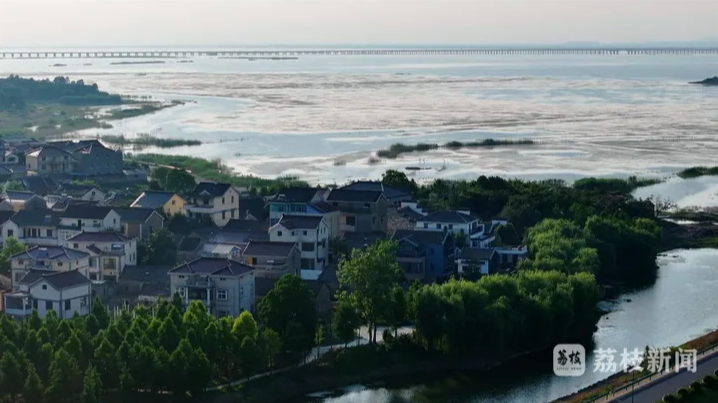
The silent yet lively "narrator" of local civilization
A century-old Chinese tallow tree that stands at the entrance of Zhujiacun. Zhang Lantou watched it grow up since childhood, never paying close attention to its shape, only knowing that it is full of treasures: its leaves can be used as a black dye, and the white waxy layer of its seeds is an excellent material for making candles.
A few years ago, visitors accidentally discovered that, from a certain angle, the crown of this tree resembles a heart. The name "Love Tree" gradually became popular online, attracting many visitors. Zhang Lantou, who serves as the Party Secretary of Zhangjiacun and the village committee director, often transforms into a volunteer during his spare time, sharing the long history of this tree and Zhujiacun with visitors.
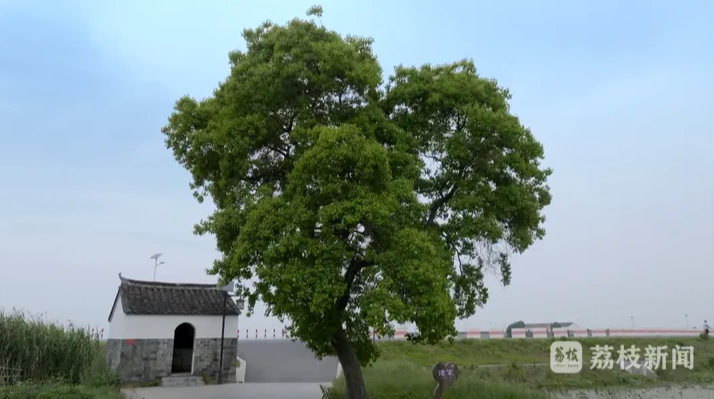
Besides this century-old Chinese tallow tree, there are two cypress trees in the village that are over 200 years old, planted on either side of the courtyard in front of the Zhu Clan Ancestral Hall. A few years ago, a flood submerged the ancestral hall, killing the cypress tree on the left. Unexpectedly, not long after, a slender branch grew straight out of the seemingly lifeless trunk, giving the ancient tree a new lease on life.
The Zhu Clan Ancestral Hall is recognized as the oldest building in the village, originally built in the late Ming and early Qing dynasties. It consists of three sections with nine rooms, where the front section serves as a stage for opera performances, the middle section is a traditional meeting place for villagers, and the back section, Dunxu Hall, is used for ancestral worship.
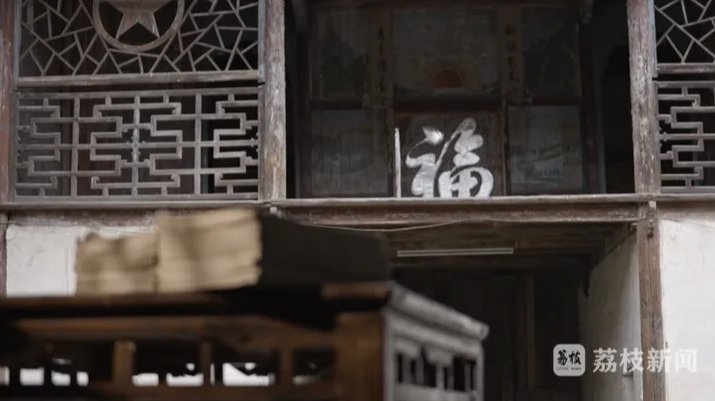
The three sections were constructed in different periods, with the old stage on the second floor of the front section being the most historic. The windows and railings are adorned with intricate traditional decorations, allowing one to imagine its former glory. After the passing of his wife last year, Zhu Hualian occasionally visits the ancestral hall to look at the stage, where he and his wife, who had known each other since childhood, used to watch performances together during their youth, gradually developing feelings for each other, and have since weathered over sixty years together.
This ancestral hall not only carries Zhu Hualian's memories of his wife but also stores many life fragments of the villagers, including ceremonies for weddings and funerals, childhood classrooms, and discussions of important matters. The deep cultural roots of the village are embedded within the blue bricks, black tiles, flying eaves, and upturned corners, carrying generations of nostalgia.
The oldest historical record in the village is the Zhu Clan genealogy, which has been preserved for over five hundred years. This thick stack of genealogies is wrapped in red velvet cloth and stored in the home of a person of good character elected by the villagers. Every year during the Qingming Festival and the beginning of October, villagers gather at the ancestral hall to record the red and white affairs of each family in the genealogy.
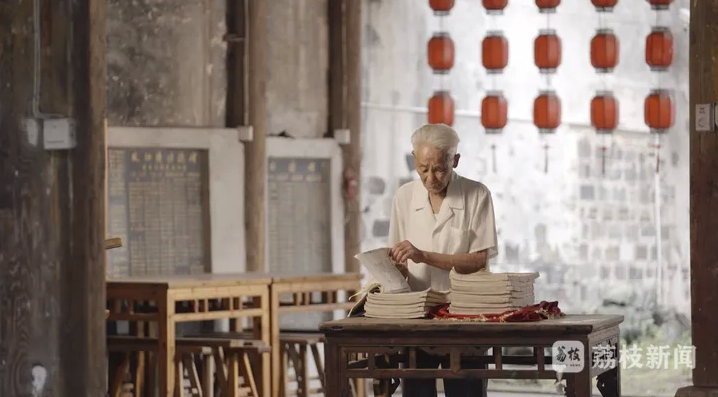
“Our ancestors came to this place, and for about a hundred years, there was no genealogy. During the Wanli period of the Ming Dynasty, Zhu Jiong, a top scholar, resolved to compile the genealogy to trace our origins,” recalls Zhu Hualian about the genealogy's history. Zhu Jiong, along with two nephews, traced their lineage back to Yuyiao, Zhejiang. Initially, the local villagers did not believe that the three newcomers were of the same clan, but upon opening the local genealogy, they confirmed it. Zhu Jiong then used this as a basis to establish their generation and compiled the "Zhongshan Zhu Clan Genealogy," which has been passed down to this day; "Zhongshan" refers to the ancient name of Lishui.
According to the genealogy, during the year 1333, Zhu Jishou, a descendant of the Zhu family, moved from Gaochun to Lakehead Zhujiacun, becoming the village's founding ancestor. “The genealogy can tell you who you are and where you come from.” Zhu Hualian learned from the genealogy that he is the 24th generation descendant of the Zhu family. The genealogy records not only the lives of vibrant individuals but also village rules, family teachings, and important historical events, connecting the past with the future, individuals with their families, and engraving the shared memories of Zhujiacun.
Changing the Way to Thrive by Leaving Behind Fishing Gear
As you stroll through Zhujiacun, you might encounter a "carp" that passes through a wall at a corner. The mottled brick wall of the old house resonates with the fresh hand-painted colors, together dredging up a segment of fishing tales. Since migrating to the shores of Shijiu Lake during the Yuan Dynasty, generations of Zhujiacun villagers have made their living through fishing. "Generally, we leave before dawn and return after dark. Three people share a boat, and there are nine of us in total. We go out together and return together," says village head Zhu Dingxing, gazing at the shimmering surface of the lake at sunset. "The most spectacular sight is when we return with our nets; looking from the dock, the boats on the lake line up for hundreds of meters."
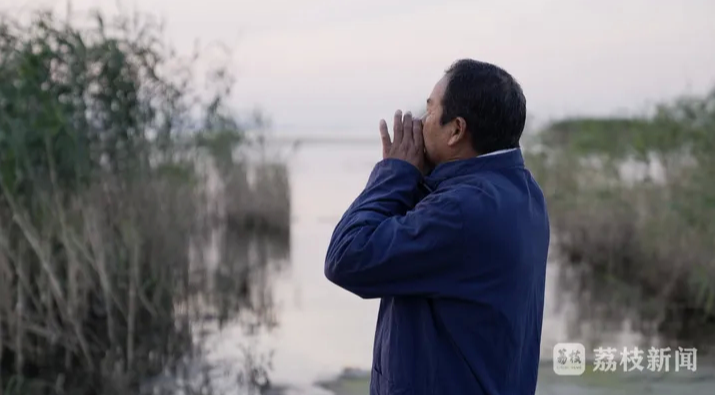
Wei Xiaoqing married into Zhujiacun from a neighboring village thirty years ago. After getting married, her husband gave up working outside, and together they built boats and bought nets, getting up early and working late to fish in the lake. In her memory, it was an especially tough life; often too busy to even have breakfast, leading to stomach issues, while the meager income they earned was very limited.
A turning point occurred five years ago, as the Yangtze River's conservation efforts gained momentum, leading to a quiet shift in the villagers' mindset. The past lifestyle of relying on the water for sustenance had elements of luck; one needed to go along with the "temperament" of the lake—when the water rises, the harvest is abundant, and vice versa. Now, Zhujiacun has adopted a new approach to make a living from the water: "We will scientifically develop aquaculture, relying on the beautiful scenery of Shijiu Lake and the village's rich cultural heritage, aiming at tourism by converting old residences into beautiful guesthouses to welcome visitors from all directions," explains Zhang Lantou.
An old house that is "seventy to eighty years old" has been transformed into a guesthouse. During the renovation, villagers adhered to the principle of repairing it as it was, preserving the house's exterior while only replacing some damaged tiles. Opening the creaking old wooden door reveals a completely new atmosphere inside.
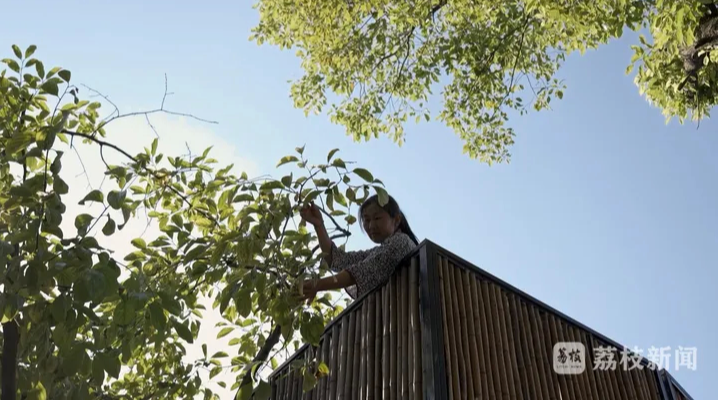
Wei Xiaoqing is particularly fond of this old house, as it resembles the one she lived in during her childhood. Additionally, after marrying into the village, she has witnessed the renewal of the old house over the past thirty years. Seizing the opportunity of the village's transformation, she changed out of her heavy fishing gear and donned a blue printed uniform to manage this new guesthouse. She wants to share the story of this house with more tourists.
During holidays, the guesthouses in the village are nearly fully booked, and Wei Xiaoqing is busy yet happy. At 51 years old, she still wears a high ponytail. As she talks about her current life, her eyes sparkle like crescent moons, “My wallet is fuller, and it's more convenient; I can take care of the elderly and children.” In the past year, the guesthouse industry has increased the average income in Zhujiacun by 10% compared to the previous year.
Waiting for the sunrise and sunset by the shores of Shijiu Lake, capturing the seasonal changes of the natural Love Tree in photographs, stepping into the ancient residences in the village to touch the textures carved by time, and experiencing the slow life of returning to the fields, Zhujiacun attracts more and more tourists with its landscapes that reflect the harmony between nature and culture. Huang Ling, who lives in Wuhu, Anhui Province, was occasionally drawn to a photo of Zhujiacun online, and late at night, she took two riding friends to the village to quietly watch the sunrise gradually tinting the lake’s surface with soft light, while the early risers sent up wisps of smoke from their kitchens. “Far away from the hustle and bustle of the city, this tranquil life in an ancient village is something I long for.”
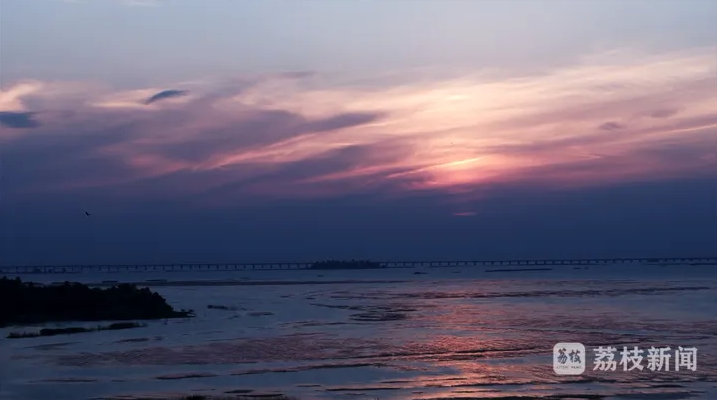
Retaining Nostalgia While Exhibiting a New Look through Inheritance
"Yue country's crowned garments are passed down through generations; Zhongshan's literary families are renowned." This couplet written on the door of the Zhu Clan Ancestral Hall records the migration of the Zhu ancestors from the ancient Yue kingdom area in Zhejiang, emphasizing their generations' dedication to scholarship and cultivation. The descendants of the Zhu family inherit their ancestors' legacies, writing new stories with ink.
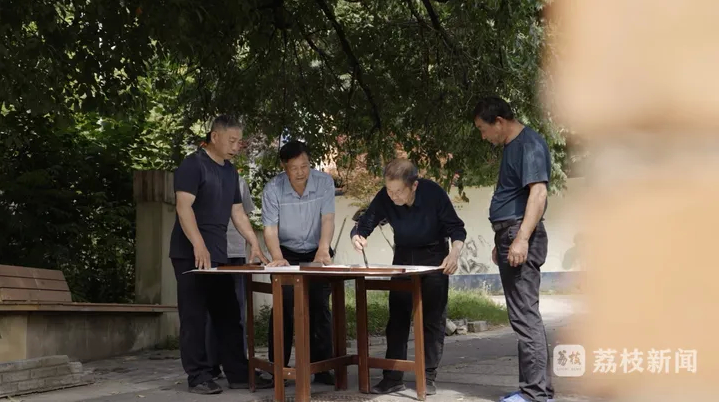
Villager Wei Jianzhong has grown up in Zhujiacun and has accompanied the village for 72 years. As a child in elementary school, he enjoyed imitating his teacher's handwriting, gradually falling in love with calligraphy. There are many villagers in Zhujiacun like him who excel in writing, and the village has also produced calligraphers such as Zhu Peihong and Zhu Mingyue, members of the Chinese Calligraphers Association. Today, Zhujiacun has become the first calligraphy-themed village in the district and serves as a base for the popularization and promotion of calligraphy in Jiangsu Province. “People say that Zhu family members write well, and it's not just empty words; we can back it up,” says Wei Jianzhong.
Not only do the Zhu family members enjoy calligraphy, but many scholars have emerged throughout generations. Flipping through the yellowed genealogy, one finds numerous names of civil officials from the Zhu family, yet few records of military officials. In the 1970s, Zhujiacun produced 30 college students, becoming a well-known "scholar village."
Ancient villages serve as "living specimens" of traditional culture. The hundreds of years of historical evolution in Zhujiacun are not only embodied in the "spirit" of the villagers but also exist within their spontaneous awareness of preservation. Those carefully protected ancient architectural relics, where every brick and tile bears the unique imprint of local civilization, crystallize the power to resist the erosion of time.
In finding a balance between protecting old houses and seeking new development, Zhujiacun has established a middle ground: "For villagers who still have land elsewhere, we generally advise them to keep their original old houses. If it is the only land they have, and they wish to demolish or renovate the old house, we will guide them to proceed while retaining the ancient architectural appearance as much as possible," explains Zhang Lantou. Several guesthouses transformed in the village have adhered to this philosophy during design and renovation, preserving the original texture of the old houses and inviting local skilled craftsmen to participate in the restoration with traditional techniques. “Most of the renovations in our village are done by the villagers themselves.”
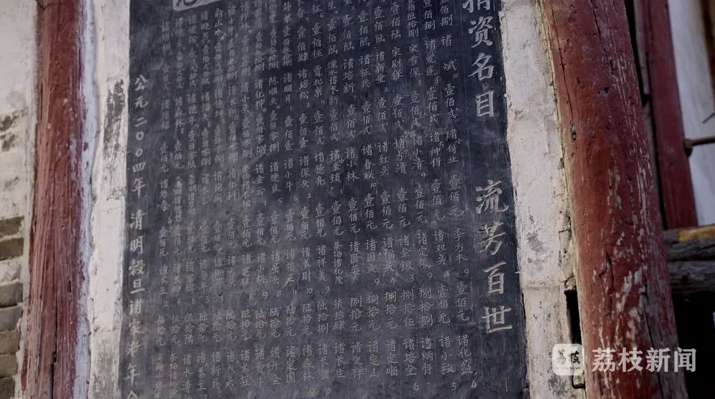
The Zhu Clan Ancestral Hall, as a symbol of the family's spirit, is especially valued by the villagers. It has undergone several repairs and restorations, with each household contributing funds and labor. Several renovation stones of different eras inside the ancestral hall record the vigilance passed down through generations. The earliest record of repairs can be traced back over seventy years. Today, although villagers no longer rely on the lake for their livelihoods, the nearly thousand-year-old fishing culture is being carefully preserved. The temple of Tianhou (Mazu Temple), where fishermen once prayed for safety and protection, remains well-preserved next to the Zhu Clan Ancestral Hall.
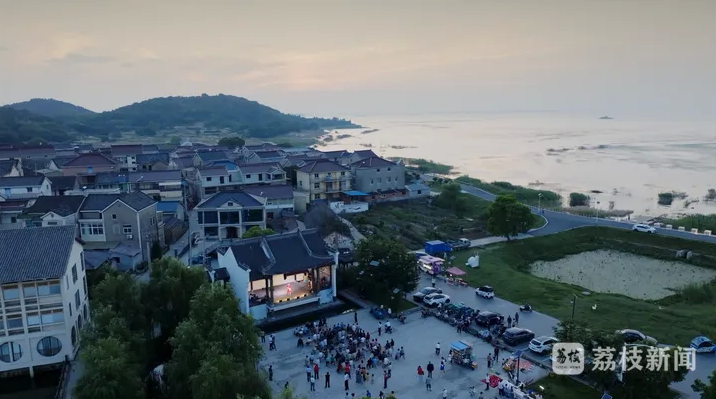
Opera is a particularly beloved cultural activity among the villagers of Zhujiacun. Villagers sometimes create and perform their own plays, and the old opera stage in the Zhu Clan Ancestral Hall has created many shared memories for them. However, as time has progressed, the small stage on the second floor is no longer suitable for larger performances. Behind it, the newly built Fengqi Building has infused Zhujiacun with new vitality, continuing the villagers' unwavering vigilance.
Having weathered hundreds of years of ups and downs, the once-ancient Zhujiacun has condensed tradition into new nectar, retaining its "roots and soul" through active protection and development. Under the century-old Love Tree at the village entrance, the rich local dialect and the flow of visitors together create a beautiful new portrait that captures nostalgia.
Copyrigh 2008-2024Nanjing LiShui district people's government